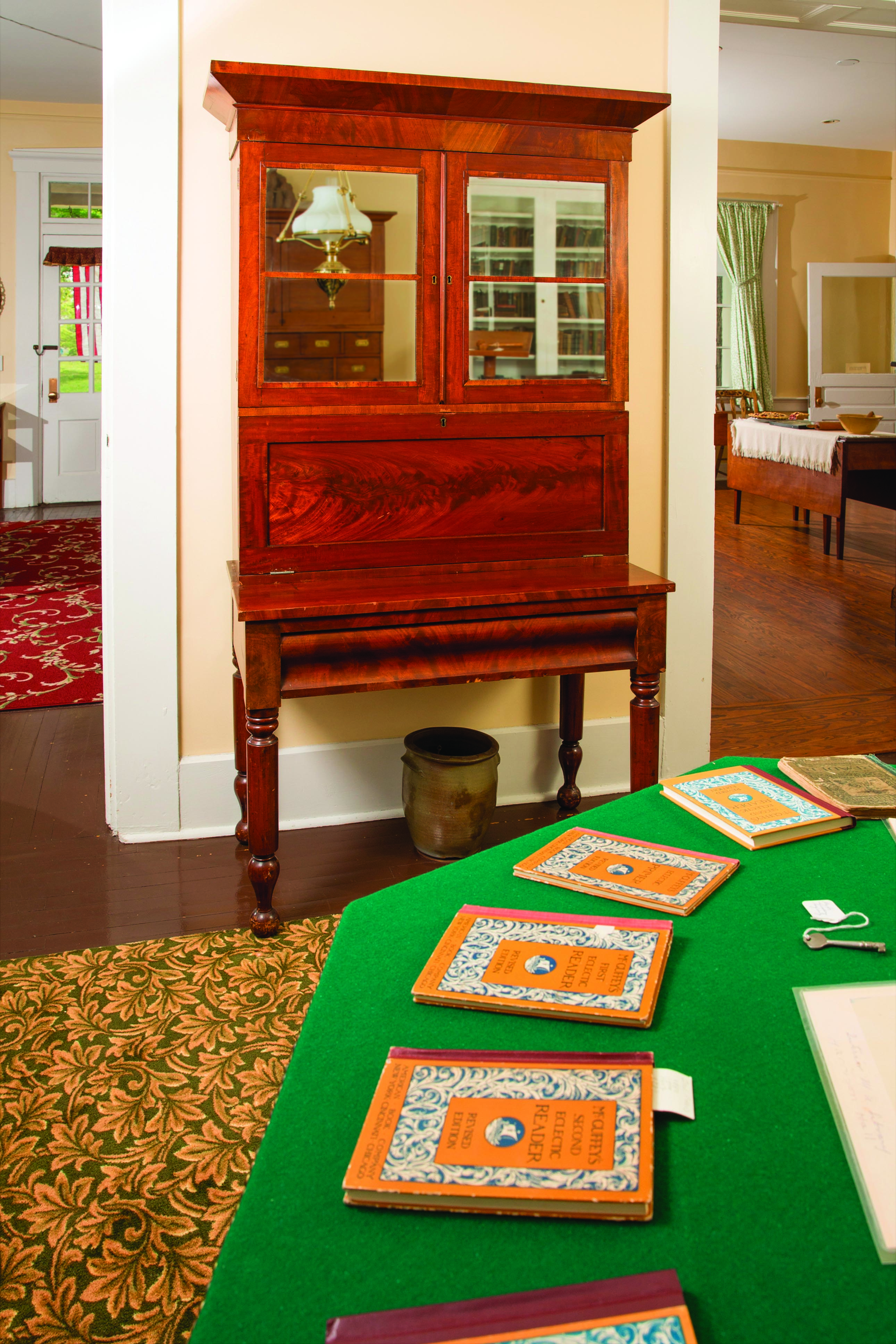
MCGUFFEY MOMENTS
STEVE GORDON, ADMINISTRATOR
Early this summer, the Tichenor-Stowe desk, a treasured artifact housed on the Western College campus since 1860, was donated to McGuffey Museum. The desk is now located in the McGuffey library room, where it can be seen along with the famous McGuffey table.

The story of the Tichenor desk traces its origins to Western’s early years. In 1860, Elizabeth Tichenor, the recently-widowed wife of Gabriel Tichenor, donated funds and a set of furniture to Miss Peabody and the Western Female Seminary. Gabriel Tichenor had been a founding Western trustee and generous Western benefactor. Born in Essex, New Jersey in 1781, Tichenor was appointed an attorney of the Mississippi Territory in March 1809. Following marriage to Elizabeth Wallace in 1810, Tichenor became a successful businessman and planter in Natchez, and in 1826 he sent his slave and daughter to Cincinnati where they were emancipated (MS Census Index; Broussard, p. 28). Sometime between 1830 and 1834 the Tichenor family moved to Cincinnati. The Beecher family came to Cincinnati in 1832 where Lyman Beecher served as President of Lane Seminary (Western Star, 6 July 1832). Primary research conducted by Dr. Elizabeth Johnson, a McGuffey Museum volunteer, confirms that as early as 1834 members of the Tichenor and Beecher families were congregants of Lane Seminary Presbyterian Church in Walnut Hills. In 1836, Gabriel Tichenor was ordained as a ruling elder in the church and was in attendance when the new chapel was dedicated by Lyman Beecher. In November 1837, newborn daughters of both families were baptized in Lane Church (Session Minutes). By 1840, the federal population census indicates Tichenor’s Cincinnati residence housed nine free white residents and four free “colored” persons. These latter residents may have been the slaves enumerated within Tichenor’s Natchez household in 1830 (US Population Census, 1830, 1840).
Harriet Beecher Stowe, also a member of Lane Church and a nearby neighbor of Tichenor’s Walnut Hills home, must have been fascinated by Tichenor’s reminiscences of life in the Deep South (Cincinnati Directory, 1844). Born in Connecticut to a New England family, it seems entirely plausible Stowe would have welcomed conversations with Tichenor, who, as a slave-owner in Mississippi would have willingly shared his first-hand experiences of plantation life. During her visits with Tichenor, Stowe reputedly sat at his desk taking notes for what ultimately would in 1851 be serialized into “Life Among the Lowly,” later published in two volumes as Uncle Tom’s Cabin (Nelson, p. 64; Pike Dictation, n.d; “Historic Desk at Western,” 1940).
The origins of the Tichenor desk before coming to Western are unknown. Its form and style are typical of a pre-1850 desk on frame, sometimes referred to as a plantation desk. The Empire style turned legs, mahogany veneer on the front face, cherry wood, original hardware and simple cornice all suggest the decade of the 1840s as a construction time frame. The Tichenor desk serves as a tangible reminder of Western College’s long history and its early association with an important transplanted southerner. The desk also embodies the story of Tichenor’s influence on one of the 19th century’s most famous authors, Harriet Beecher Stowe. Its new home, McGuffey Museum, welcomes the opportunity to interpret the desk while carefully conserving it, along with the famous McGuffey table, for future generations.
McGuffey Museum hours
Thur–Sat: 1–5 PM
401 E. Spring St. Oxford, OH 45056
(513) 529-8380
McGuffeyMuseum@MiamiOH.edu
MiamiOH.edu/McGuffey-Museum
